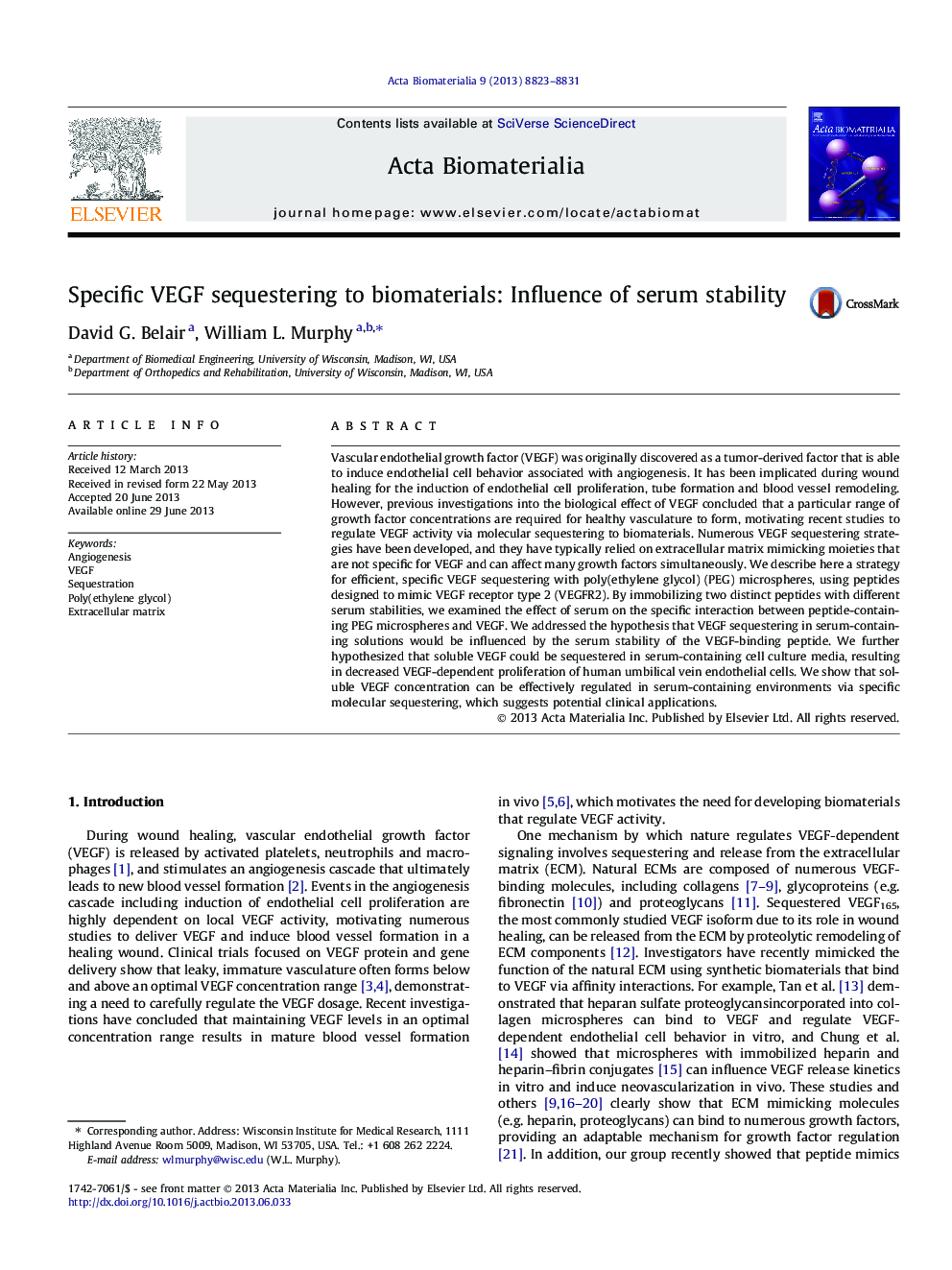| Article ID | Journal | Published Year | Pages | File Type |
|---|---|---|---|---|
| 10159462 | Acta Biomaterialia | 2013 | 9 Pages |
Abstract
Vascular endothelial growth factor (VEGF) was originally discovered as a tumor-derived factor that is able to induce endothelial cell behavior associated with angiogenesis. It has been implicated during wound healing for the induction of endothelial cell proliferation, tube formation and blood vessel remodeling. However, previous investigations into the biological effect of VEGF concluded that a particular range of growth factor concentrations are required for healthy vasculature to form, motivating recent studies to regulate VEGF activity via molecular sequestering to biomaterials. Numerous VEGF sequestering strategies have been developed, and they have typically relied on extracellular matrix mimicking moieties that are not specific for VEGF and can affect many growth factors simultaneously. We describe here a strategy for efficient, specific VEGF sequestering with poly(ethylene glycol) (PEG) microspheres, using peptides designed to mimic VEGF receptor type 2 (VEGFR2). By immobilizing two distinct peptides with different serum stabilities, we examined the effect of serum on the specific interaction between peptide-containing PEG microspheres and VEGF. We addressed the hypothesis that VEGF sequestering in serum-containing solutions would be influenced by the serum stability of the VEGF-binding peptide. We further hypothesized that soluble VEGF could be sequestered in serum-containing cell culture media, resulting in decreased VEGF-dependent proliferation of human umbilical vein endothelial cells. We show that soluble VEGF concentration can be effectively regulated in serum-containing environments via specific molecular sequestering, which suggests potential clinical applications.
Keywords
Related Topics
Physical Sciences and Engineering
Chemical Engineering
Bioengineering
Authors
David G. Belair, William L. Murphy,
